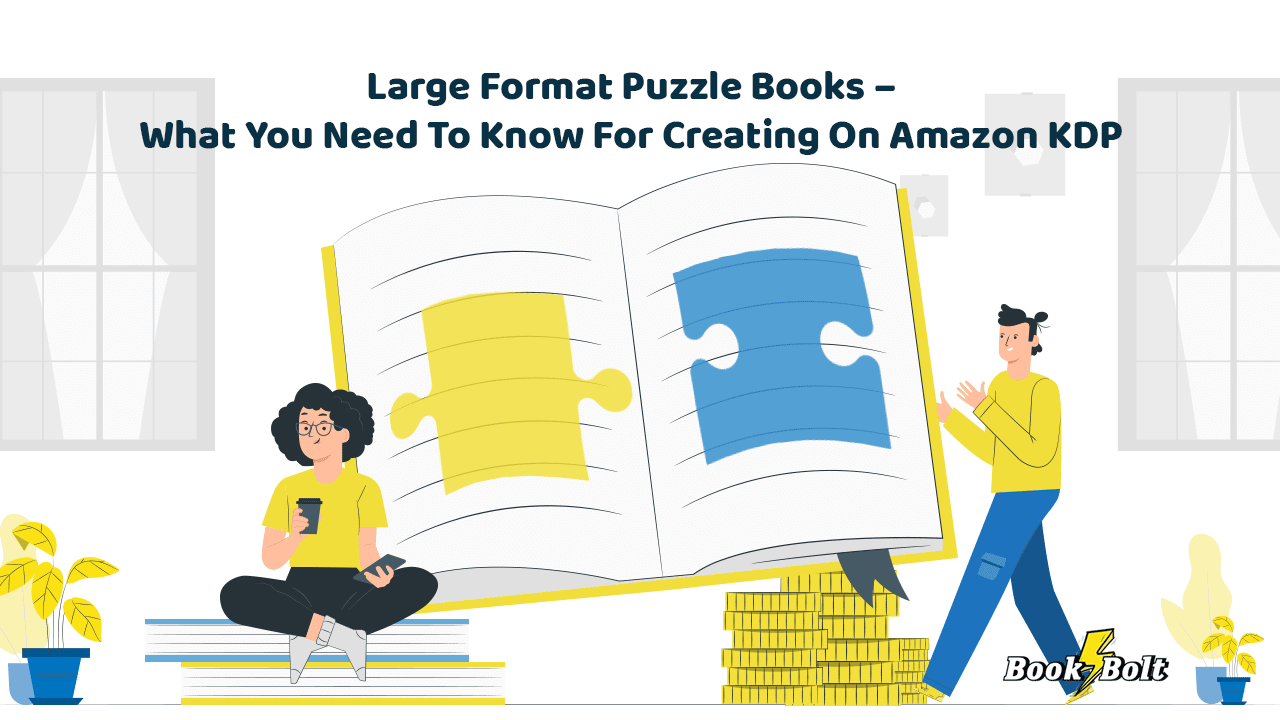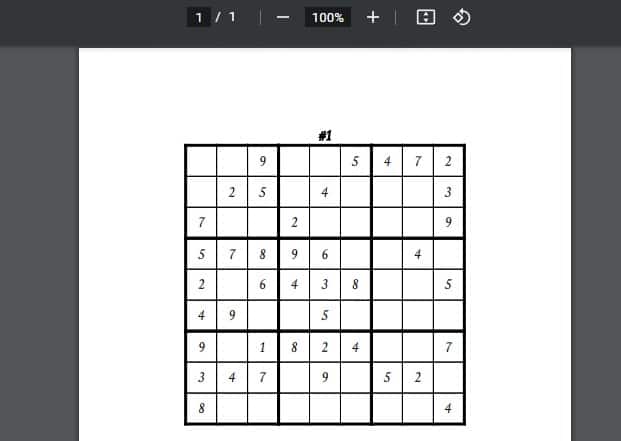
When trying to decide on what to create in Book Bolt Studio, or what to add to your current inventory of items, you might have possibly overlooked one key product: puzzle books, namely large-format ones. And it seems obvious once you really consider doing one, after all, who doesn’t love a puzzle book? From the time we can first read, word and shape games become a part of our life. Rekindling someone’s love for such a pastime can only be a good thing for everyone involved.
With Book Bolt Studio, your design options for puzzle books are nearly limitless.
Large Format Puzzle Books: Serving Two Audiences
But why a large-format version? There are many reasons you may wish to opt for this. A larger book stands out more; it catches the eye especially if you have taken the time and effort into designing the most attractive cover for it. The bigger size of the book might make it more welcoming, like being a kid again when everything around you seemed larger than life. These books should be on display for your customers to appreciate visually as well as for use.
Because they are large format, image-rich, and well-produced, they can serve as both a kind of décor and a type of print publication; they are not intended to be stored away on a bookshelf. A properly made, elegant book can make all the difference to the feel and comfort of a space when placed in a living room, guest room, or playroom, which is one reason they make such wonderful gifts. But there are two other reasons to opt for this, specifically in terms of the very young and the elderly. You can satisfy the needs of both groups with a single product.
For the younger ones learning these types of things for the first time, they need more surface space to explore while they begin to hone their fine motor skills. On the opposite end of this spectrum, older people often have a difficult time seeing smaller details. Large format puzzles magnify everything for them so they can enjoy without feeling frustrated. And if they also, like their younger counterparts, find they are not in full control of exact movements, they have room to “color outside the lines” so to speak. This is a win-win for your product line while being inclusive of every age range out there.
But what do you include in these? Surely there’s some type of puzzle that lends itself better to a larger format? Well, not really. Anything you can dream up or find a template for on the site works in just about any format. And your possible range is huge, anything from the newly-popular Sudoku, to traditional word searches and crosswords, from cryptograms to connect-the-dots. Bring them all into your self-publications or focus on varieties of just one. But remember, you are looking in this case for the designs YOU think are going to benefit the most from this formatting. And Book Bolt is there to help guide you through this entire process.
Once you go to BookBolt.io, log in or set up your new account if you’re just starting out. From there, you will find a wonderful range of video tutorials to take you through all the basics and into the intermediate methods of creating your self-published work. You will find options there to start the interior design of your puzzle book, and you’ll see larger formats are available such as 8×11”, into 8.27×11.69, and even up to 8.5” square, producing a very interesting shape for a variety of puzzles. This last format lends itself perfectly to things like Sudoku (explained below) and crosswords.


From there, simply open a new project by clicking the “Page Templates” tab (the one that looks like a maze in the left margin of the designer) and you will see all the various templates you can use to flesh-out your ideas for a puzzle book. Once you do that, click on that page, fill out the information form, and the system will align your first page into the book format you selected. Proceed with other selections for the rest of your pages and before you know it you will have your first large-format puzzle book!
Crosswords we all know, and we’ve all done word jumbles. But not everyone is familiar with Sudoku as, since it’s math-based, some shy away from it thinking there is a steep learning curve. There isn’t one, and although the subtleties of the game can take a long time to master, the game itself is quite straight-forward. According to the Merriman-Webster dictionary, Sudoku is “a puzzle in which missing numbers are to be filled into a 9 by 9 grid of squares which are subdivided into 3 by 3 boxes so that every row, every column, and every box contains the numbers 1 through 9.” We are presented with 9 boxes inside one large square playing field. Each box has to have the numbers 1 through 9 in them, but they need to be arranged so that not only are no numbers repeated inside one of the boxes, they are also not repeated in any column across the boxes from left to right, or up and down. After a few attempts, the logic of the game will start to take shape and it really does become fun once the objective is clear. You have no limit to how many times you need to re-assess your choices, and sometimes there’s more than one way to resolve the entire puzzle. If you can count to 9, you can play Sudoku.
But what benefit is a larger format for a game like this? Well, instead of having just one game on a page, multiple games can be printed on one. You can design these grids yourself and place them using your own editing software and upload the result. Perhaps have the player go from stage to stage like a journey, with the pages getting progressively harder as they go on. With more page real estate at your disposal, you can design to the limits of your creativity. Try a large-format book in your sales and see for yourself how well this can go over.


